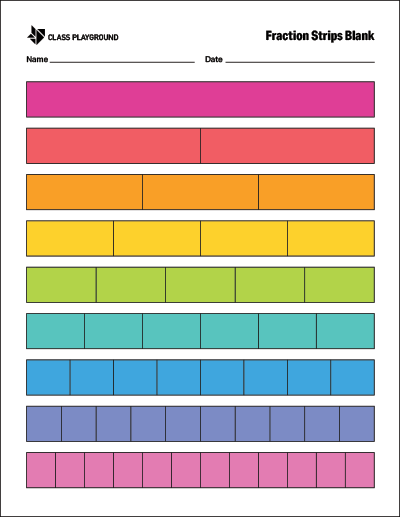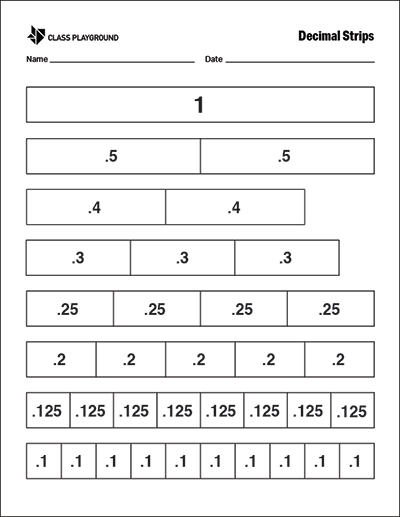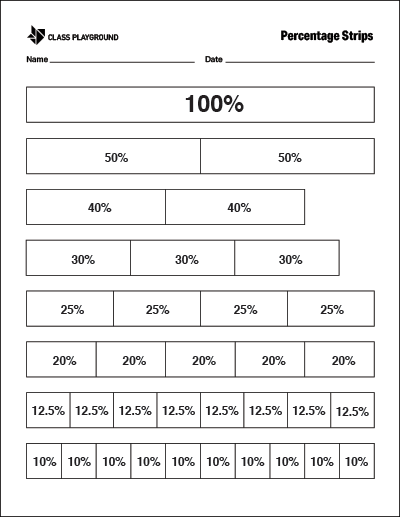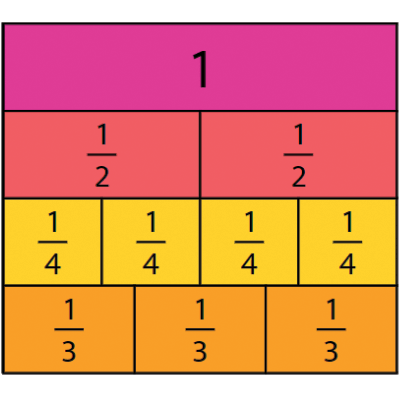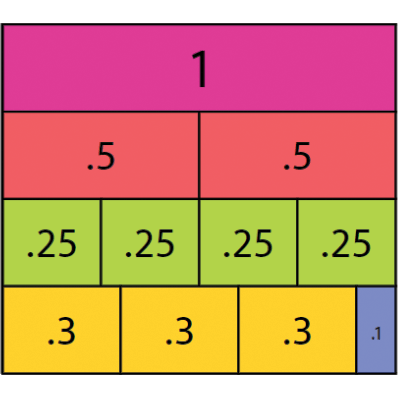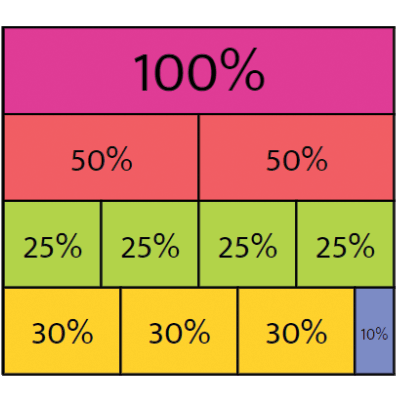Fraction Strips: Making a Complex Topic Simple
Which is bigger, one-third or one-fourth? Without a visual, many people wouldn’t know. In fact, A&W’s “third pounder” burger flopped in the 1980s because people believed that a quarter pounder was a better deal than a third of a pound burger.
Fractions can be a tricky topic, which is why tools such as fraction strips are so helpful. With fraction strips, students can visualize fractions, helping bring the concept to life through concrete examples.
What are Fraction Strips?
Fraction strips are a math manipulative that provide a visual representation of fractions. They are simply rectangular bars, or ‘strips’, that show a whole or parts of a whole.
Each strip is divided into equal parts to represent fractions. Typically, one strip is undivided to represent the whole (1). Other strips might be divided into halves (1/2), thirds (1/3), fourths (1/4), and so forth.
How to Use Fraction Strips
Fraction strips can be used in various ways to teach different fractions-related concepts. In the classroom, you can use online fraction strips or fraction strip printables that students cut out. In either case, students can move the fraction strips around to model fractions, compare their sizes, perform operations, and more.
Fraction Strip Activities
You can enjoy many fraction strip activities with students. As students build their understanding, you can introduce more challenging activities. Discover some fun fraction strip activities you can try with your students below:
- Modeling Fractions: Show students a fraction such as two sixths (2/6). Ask students to model the fraction using the fraction strips. You can also challenge students to model mixed fractions.
- Understanding Fraction Sizes: By comparing one fraction strip with another, students can visually see which fractions are larger or smaller. For example, it becomes clear that 1/2 is larger than 1/4 when you compare the corresponding fraction strips. You can also have students write sentences using “greater than” and “less than” symbols. For example, students can write 1/3 > 1/4.
- Equivalent Fractions: Fraction strips can effectively demonstrate the concept of equivalent fractions. For instance, two 1/4 strips can be compared to a 1/2 strip. This shows that 1/4 + 1/4 is equal to 1/2.
- Adding and Subtracting Fractions: Students can use fraction strips to model addition and subtraction problems. For example, challenge students to add one-sixth (1/6) plus two-sixths (2/6). Students can line up the strips, showing that the answer is three-sixths (3/6). Then, students can simplify their answer using equivalent fractions, and determine that three-sixths (3/6) is equal to one-half (1/2).Similarly, students can subtract fractions, using equivalent fractions as needed to solve each problem.
- Compare to Decimals and Percentages: Fractions are very closely related to decimals and percentages. You can use decimal strips and percentage strips alongside fraction strips to compare sizes. Comparing strips allows students to see that one-half is equal to 50% and 0.50.
The Benefits of Using Fraction Strips
Fraction strips offer numerous benefits for teaching and learning fractions. Here are some of the advantages of fraction strips:
- Visual Learning: Fraction strips provide a visual representation of fractions, making this abstract concept more concrete. This can be particularly beneficial for visual learners.
- Active Learning: Manipulating fraction strips makes learning more hands-on and interactive, which can boost engagement and retention.
- Building Confidence: By making fractions easy to understand, fraction strips can help build students’ confidence in their math abilities.
- Deep Understanding: When students model fractions using fraction strips, they build a deep understanding of the concept. This makes it easier for students to work with fractions, as they can visualize the amounts associated with fractions.
- Real-World Applications: When students build a strong understanding of fractions, they can use this knowledge in various real-world applications. For example, students can double, triple, or halve recipes when cooking or baking. Similarly, students can calculate sale prices when items are “half off.”
Fraction Strip FAQs
Still have questions? Take a look at some commonly asked questions about fraction strips.
What is a fraction strip?
Fraction strips are small rectangles of paper used to represent different fractions. Typically, a set of fraction strips includes one whole, two halves, three thirds, four fourths, etc. Fraction strips may come colored and labeled or blank so that students can color and label them.
How to use fraction strips to compare fractions?
To compare fraction strips, set out the larger fraction strip. For example, place the “1” or “whole” fraction down first. Then, place the smaller fraction below the larger one, lining them up on the left-hand edge. Or, you can place the smaller fraction strip on top of the larger one, lining up one of the edges. With either method, you can line up more than one fraction next to each other or on top of each other. This way, you can show equivalent fractions.
Which fraction strips are equivalent?
Many fractions are equivalent. Here are a few common examples:
1/4 + 1/4 = 1/2
1/6 + 1/6 +1/6 = 1/2
1/3 + 1/3 + 1/3 = 1
1/8 + 1/8 = 1/4
You can demonstrate these equivalent fractions using fraction strips.
How to make paper fraction strips?
Making paper fraction strips is easy with a fraction strips PDF . Simply print out the strips on cardstock and cut them apart. You can choose to laminate them or use them as is. Fraction strip printables may be color, black and white, labeled, or blank. Choose the version that fits your classroom’s needs best.




